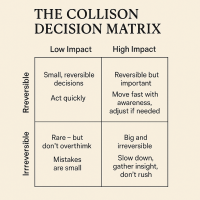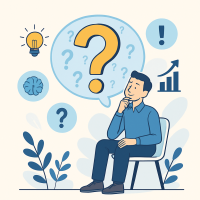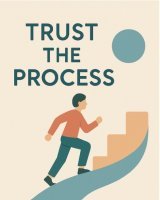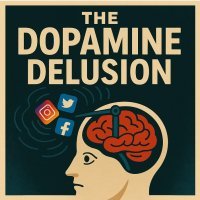Social Contagion
You Become The Company You Keep
You are the average of the 5 people you spend the most time with
What Is Social Contagion?
Social contagion at the physical level is something that we have all gone to great lengths to avoid during the recent Covid-19 pandemic.
With the phased lifting of the
lockdown, and the resumption of social contact we are now increasingly
exposed to another threat, another form of contagion.
This
renewed threat is known as emotional contagion, which is the effect and
impact of other people's emotions on our own dominant emotional state.
This matters, as many of our life experiences are created or attracted
by our dominant emotional state.
Because the means of transmission is via renewed and increasing social contact I reframe this as emotional social contagion.
Social Contagion - The Tidal Swirl Of Other People's Emotional Turbulence
In her highly regarded book "An Abbreviated Life - A Memoir" former Sunday Times journalist Ariel Leve paints a painful, poignant portrait of our vulnerability to the tidal swirl of other people's emotional turbulence.
This
is especially true when we are children. Leve recounts how as a child
she desperately attempted to ride the emotional waves emanating from her
mother, whom she describes as volatile and narcissistic.
“I
had no choice but to exist in the sea that she swam in. It was a fragile
ecosystem where the temperature changed without warning. My natural
shape was dissolved and I became shapeless.”
Leve explains:
“When
somebody’s mood can shift quickly, you’re always on your toes and
you’re always on guard, which means you can never really relax.
And
as a consequence, as an adult, I find that I absorb the mood and energy
of other people very intensely, so I need a lot of time alone to
decompress.”
Her experience resonates with me.
Is this OK for Dad?
I
recall as a child accompanying my father on his rounds as a grocery
delivery man. Each time we visited a new location, I would immediately
tune in to my highly sensitised "vibe antennae" and take the emotional
and psychic temperature of the site to see if it felt "OK for Dad", was it somewhere that he would like and that would make him happy.
At
the time I didn't know why I did this. But it was a habitual thing and
developed into a form of hyper-vigilance where I was constantly taking
the emotional and psychic temperature of new situations and places.
Church bells and overwhelming feelings of misery
It
was a beautiful sunny afternoon and I was sitting on a bench in the
churchyard of an old English parish church. The sun was shining, birds
were singing, butterflies were fluttering, my mood was mellow and I
basked in the warmth of the late summer sun.
The church bells
started ringing...and within seconds my mood changed and I was
overwhelmed with feelings of sadness, melancholy and misery.
Reflecting
on that experience in early adulthood I realised that the sound of
church bells always had that effect on me since my childhood.
Following
some forensic trawling through childhood memories supported by
corroboration from my elderly mother I came to understand that as very
small child my family had lived next to a church in a small country
village. My mother told me that she was very unhappy at that time and
frequently overwhelmed with feelings of misery and despair.
Her powerful feelings had infected me and become associated with the sound of church bells ringing.
How a leader's emotions infect an organisation
In 2001 Daniel Goleman introduced the concept of what he termed "Primal leadership"
and outlined research that he and his team conducted in a study of
3,871 executives and their direct reports and it showed that the
leader’s style determines about 70% of the emotional climate which in
turns drives 20-30% of business performance.
In an interview (with Stephen Bernhut in "Leaders Edge", Ivey Business Journal May/June 2002) Daniel Goleman said:
"Emotions are contagious, and they are most contagious from the top down, from leader to followers."
"When Likes Aren't Enough" - how social media negatively affects mental health
In "When Likes Aren't Enough: A Crash Course in the Science of Happiness"
Professor Tim Bono tackles the ever-popular subject of happiness and
well-being, but reframes it for a younger reader struggling with
Instagram envy.
The Nursing Times have recently published a study How use of social media and social comparison affect mental health
In June 2014 PNAS published the results of a massive study on Facebook users: Experimental evidence of massive-scale emotional contagion through social networks
Clearly there are so many ways that we are affected by other people's emotions. Given that we are emotional and thus energetic beings, and that as discussed at length in other articles in this series we live in an energetic universe that responds to our dominant energetic state in the experiences that we create and attract, then two important questions arise from this:
(1) How are we so susceptible to other peoples emotions?
(2) What steps can we take to protect others and ourselves?
Social Contagion - How Are We So Susceptible To Other Peoples Emotions?
Elaine Hatfield Professor of Psychology (University of Hawaii), and co-author of a pioneering academic book Emotional Contagion defines “primitive” emotional contagion as the:
“...tendency
to automatically mimic and synchronize facial expressions,
vocalizations, postures, and movements with those of another person and,
consequently, to converge emotionally.”
The contagion occurs in three stages:
1. Mimicry
2. Feedback
3. Contagion.
It
has an evolutionary purpose in that is helps us coordinate and
synchronize with others, empathize with them, and read their minds. All
of these are critical survival skills.
Social contagion is a hardwired reflex that is a basic building block of human interaction.
Social Contagion - What Steps Can We Take To Protect Ourselves & Others?
Here are five key steps:
(1) Quarantine yourself until you have figured how not to contaminate others with your bad mood. So, bless them with your absence!
(2) Inoculate yourself with mindfulness practice
(3) Drop the story and find the feeling by meditating with emotions
(4) Flatten the curve of social contagion
(5) Share compassion - and become a bodhisattva-warrior
Reflections and Action Points
Reflections
- Consider the claim: “You are the average of the 5 people you spend the most time with.”
- Who are your five closest contacts (in terms of time, emotional energy, or influence)? What dominant emotional tones or attitudes do they bring into their interactions (e.g., optimism, stress, cynicism, calm)? How do those tones reflect in your mood, mindset, or behaviour over time?
- Reflect on the nature of emotional/social contagion described in the article: The three-step process: mimicry → feedback → contagion.
- Think of a recent situation where you felt your mood shift because of someone else’s emotional state (even without noticing initially). What happened? How aware are you of your “vibe antennae” (the subtle sensing of other people’s emotional states) in your daily life?
- Explore the “energetic” framing in the article (the idea that our dominant emotional/energetic state influences the experiences we attract).
- What dominant emotional state do you carry into your key interactions (work, home life, friendships)?
- How might that state be shaped by the people around you, or the environments you inhabit? If you were to imagine “flattening the curve of social contagion,” what would that mean in your context?
Action Points
Audit your social environment
- Make a list of, say, 8–10 people you engage with regularly (daily/weekly).
- For each, note the emotional tone you observe when you first meet or start interaction (positive, neutral, drained, energised, anxious, etc.).
- Ask: Are these influences helping or hindering your aim of clarity, thought-awareness and emotional resilience (core pillars of your work with Zen Tools)?
- Decide one or two relationships you might adjust (e.g., reduce unhelpful influence, increase more supportive contact).
Set up a “mindfulness inoculation” routine
- The article suggests mindfulness as a protective step. Carve out a short daily practice (2–5 minutes) where you:
- Pause and notice how you feel before entering a social space.
- Note any emotional residue you’re carrying from prior interactions.
- Breathe and decide: Do I carry this forward, or let it go? Then, after key interactions, check in: Did I pick up someone else’s mood? Was I conscious of it?
Drop the story, feel the feeling
- The article’s phrasing: “Drop the story and find the feeling.” Practice noticing when you interpret someone’s behaviour via a story (“they’re grumpy because…”).
- Instead: pause, and simply feel the emotional tone (in your body/mind) without automatically weaving a story.
- Over time: build awareness of when you’re being influenced, and how, rather than just reacting.
Protect others by being aware of your own state
- The article says: “Quarantine yourself until you have figured how not to contaminate others with your bad mood.”
- Create a simple “pre-engagement check”: Before interacting with someone, ask “What emotional tone am I bringing?”
- If you’re carrying a heavy or turbulent feel, decide: Do I need a brief pause/rest before engaging?
- Likewise: After an interaction, reflect on whether you transmitted unintended emotional energy, and how you might adjust next time.
Select your influences deliberately
- Given how strongly emotional/social contagion works (especially from leaders, from close people)
- Choose some “emotional anchors” in your life: people, environments, activities that reliably help you feel clear, calm, thoughtful.
- Increase your exposure to these; decrease exposure to sources that tend to evoke more reactivity, anxiety, or distracted emotional states.
Further Reading:
The Failure Of Cancel Culture - It's Suppression Not Engagement
Group Culture - The Invisible Software That Rules Your Life
Group Culture and The Tyranny Of The Intolerant Minority
Return to: Techniques For Stress Management
LATEST ARTICLES
The Battle For Your Mind - How To Win Inner Freedom In A Digital Age Of Distraction
 From External Events to Inner Events. We often think of “events” as things that happen out there: the traffic jam, the rude comment, the delayed email reply. But what truly shapes our experience is wh…
From External Events to Inner Events. We often think of “events” as things that happen out there: the traffic jam, the rude comment, the delayed email reply. But what truly shapes our experience is wh…How to See Your Thoughts Without Becoming the Story
 A Practical Guide to Thought-Awareness. You can spend your life inside the stories of your mind without ever learning how to see your thoughts clearly and objectively. Most of the stuff we tell oursel…
A Practical Guide to Thought-Awareness. You can spend your life inside the stories of your mind without ever learning how to see your thoughts clearly and objectively. Most of the stuff we tell oursel…The Collison Decision Matrix - A Simple Framework for Better Choices
 The Collison Decision Matrix Is A Practical Everyday Thinking Tool. Most of us spend a surprising amount of time worrying about decisions. From small ones such as what to wear, what to eat, what to te…
The Collison Decision Matrix Is A Practical Everyday Thinking Tool. Most of us spend a surprising amount of time worrying about decisions. From small ones such as what to wear, what to eat, what to te…The Power Of Asking The Right Question
 The Power Of Asking The Right Question Lies In The Quest For Insight. To experience the power of asking the right question you must develop the practice of asking questions. The best way to improve th…
The Power Of Asking The Right Question Lies In The Quest For Insight. To experience the power of asking the right question you must develop the practice of asking questions. The best way to improve th…Site Pathways
 Here is a site pathway to help new readers of Zen-Tools navigate the material on this site. Each pathway is based around one of the many key themes covered on this site and contain a 150 word introduc…
Here is a site pathway to help new readers of Zen-Tools navigate the material on this site. Each pathway is based around one of the many key themes covered on this site and contain a 150 word introduc…How To Live With Contradiction - Beyond Thought Let Stillness Speak
 A major impact on so many peoples' lives is the situational contradiction of unfilled realistic expectations. So where does all this leave us? Well here we are, with mental equipment that is more lim…
A major impact on so many peoples' lives is the situational contradiction of unfilled realistic expectations. So where does all this leave us? Well here we are, with mental equipment that is more lim…How To Trust The Process Of Mindfulness - Right Now
 In mindfulness, the process isn’t some distant goal — it's what is happening right now. When we talk about how to trust the process of mindfulness the credibility of the process is heavily dependent…
In mindfulness, the process isn’t some distant goal — it's what is happening right now. When we talk about how to trust the process of mindfulness the credibility of the process is heavily dependent…Inner Mastery For Outer Impact - Mental Clarity For Effective Action
 Insights only matter if they translate into consistent action. In a world crowded with quick fixes and motivational soundbites, the theme “Inner Mastery for Outer Impact” calls us to something more e…
Insights only matter if they translate into consistent action. In a world crowded with quick fixes and motivational soundbites, the theme “Inner Mastery for Outer Impact” calls us to something more e…The Wise Advocate - Helping You Achieve The Very Best Outcome
 The focus of your attention in critical moments of choice either builds or restricts your capacity for achieving the best outcome. When we talk of 'The Wise Advocate' its easy to think of the consigl…
The focus of your attention in critical moments of choice either builds or restricts your capacity for achieving the best outcome. When we talk of 'The Wise Advocate' its easy to think of the consigl…Trust The Process - Beyond The Cliche
 The phrase "trust the process" has become a cliche, the woo-woo mantra of the "self help" industry. Those three little words feel like they ought to mean something useful but hidden behind them are a…
The phrase "trust the process" has become a cliche, the woo-woo mantra of the "self help" industry. Those three little words feel like they ought to mean something useful but hidden behind them are a…The Dopamine Delusion - Why Anticipation Beats Achievement
 The thrill we feel is not in the having, but in the wanting. The more we have, the more we want. The more things we acquire and the easier things get for us, the more discontent we feel. The more spo…
The thrill we feel is not in the having, but in the wanting. The more we have, the more we want. The more things we acquire and the easier things get for us, the more discontent we feel. The more spo…The Power Of Silence Is Experienced In Your Use Of Language
 Practise the "Beneficial Neurological Delay" for optimal comprehension. The power of silence is experienced in your use of language, specifically: - How you formulate the words you use to think and in…
Practise the "Beneficial Neurological Delay" for optimal comprehension. The power of silence is experienced in your use of language, specifically: - How you formulate the words you use to think and in…
